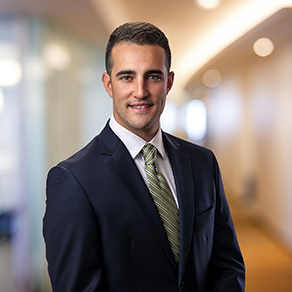
SECURE 2.0 Roth Catch-Up Contribution Rule
The Setting Every Community Up for Retirement Enhancement (SECURE) 2.0 Act, enacted in December 2022, brought wide-ranging changes to retirement plans. One of the significant changes is the catch-up contribution provision, which, despite its initial complexity, offers substantial benefits to both employers and employees. The new Roth catch-up contribution rule applies to employees who participate in a 401(k), 403(b), or 457(b) plan and whose prior-year social security wages exceeded $145,000.
The rule was set to take effect on January 1, 2024. However, recognizing the challenges plan sponsors were facing to comply, the IRS has issued Notice 2023-62, which provided a two-year administrative transition period for employers, extending the effective date to January 1, 2026.
In addition to extending the deadline, the new guidance in Notice 2023-62 corrected a technical error in the SECURE 2.0 Act that caused confusion among taxpayers and their advisors regarding the continued availability of catch-up contributions for employees. The IRS clarified that individuals aged 50 or older can continue to make catch-up contributions after 2023, regardless of income level.
Roth Contributions Under SECURE 2.0 Act
Individuals who are 50 years old or above can make catch-up contributions to their 401(k) plans and other similar retirement accounts, regardless of their income level. The allowed amount is adjusted every year to account for inflation. In 2024, you can contribute an extra $7,500 on top of the current annual limit of $23,000 for 401(k) contributions.
Previously, individuals who were eligible to make catch-up contributions to their 401(k), 403(b) or 457(b) retirement plans had the option to do so on a pre-tax or after-tax Roth basis, depending on their preference and their employer’s plan options. However, Section 603 of the SECURE 2.0 Act now requires that higher-income participants whose Social Security wages from the previous year exceeded $145,000 must designate any catch-up contributions as after-tax Roth contributions. Moreover, any plan that allows higher-income participants to make such additional contributions must also allow other participants aged 50 or older to make their catch-up contributions on an after-tax Roth basis.
Compliance with the mandatory provision by January 1, 2024, proved to be complex for plan sponsors and employers. Some of the larger obstacles faced included:
-
- Identifying higher-income participants for plan administrators. Payroll systems need to be programmed to track the $145,000 earnings threshold for retirement plan purposes (different than earnings used to determine highly compensated employee status), and even then, may not have been able to relay the information in time for plans to ensure affected participants made their catch-up contributions on the mandatory Roth basis beginning January 1.
- Sponsors implementing procedures to restrict catch-up contributions to Roth contributions and communicate these changes to their employees.
- Employers who didn’t provide Roth contribution options in their traditional retirement plans had to either modify their plans to allow Roth contributions, which could take several months to process and implement, or remove the ability for all employees to make catch-up contributions.
Two-Year Transition Period
Without expressly delaying the effective date, Notice 2023-62 provided some of the requested relief in what is styled as a two-year “administrative transition period” to facilitate an orderly transition for compliance with the SECURE 2.0 provision. This means that employers can allow catch-up contributions that are not designated as Roth contributions after December 31, 2023, and until January 1, 2026, without violating the SECURE 2.0 Act. Additionally, plans without Roth contribution options may allow catch-up contributions during this period.
The IRS also used Notice 2023-62 to announce that they intend to issue additional guidance regulating to Section 603 that is “under consideration.” That guidance is expected to clarify the rules for self-employed individuals, provide flexibility to plan sponsors to treat certain pre-tax catch-up contributions by higher earning participants as Roth catch-up contributions and offer guidance specific to multi-employer plans.
Next Steps
Although Notice 2023-62 offers some much-needed breathing room for plan sponsors and employers, given the complexity of system administration, efforts should continue toward a January 1, 2026, implementation date. Additionally, it is important for employers to be aware of other mandatory provisions in the SECURE 2.0 Act that must be in operational compliance from the applicable effective dates to maintain tax-qualified status. As future guidance is released, plan sponsors should work with their advisers to understand what changes, both required and optional, are necessary. If you have any questions, please contact our firm.
Contributing author: Timothy L. Corapi, CPA is an audit manager with experience planning and managing multiple engagement teams through the performance of audits, reviews, compilations, and other attest services. His background includes serving automotive dealerships, life sciences, manufacturing and construction industries. For more information on this topic, you may contact Tim at tcorapi@dmcpas.com or (315) 472-9127.
